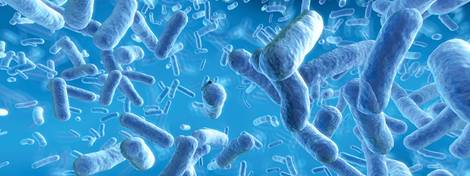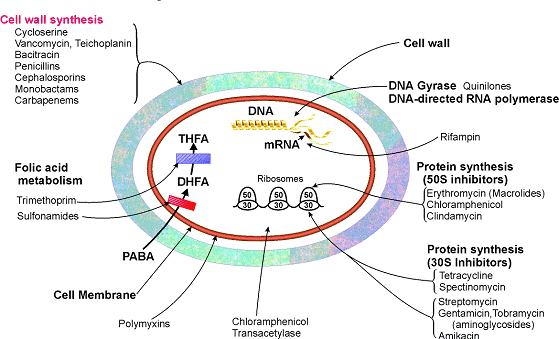

Antimicrobial Natural Products

1. Natural antimicrobial products from plants
Secondary metabolites from plants are extensively studied as promising healthy ingredient or human disease controlling agents. The antimicrobial efficacy of components in plants depends on the chemical structure of active components and their concentration. There are various chemical components present in plants with antimicrobial effect including saponin, flavonoids, thiosulfinates, glucosinolates, phenolics, and organic acids. However, the main components in plants with antimicrobial activity are phenolic compounds such as terpenes, aliphatic alcohols, aldehydes, ketones, acids, and isoflavonoids.
Phenolic compounds of EOs such as citrus oils extracted from lemon, olive oil (oleuropein) and tea-tree oil (terpenoids), orange and bergamot have broader antimicrobial effects. However, there are increasing reports of nonphenolic oil compounds, which are effective against both Gram-positive and Gram-negative groups, from oregano, clove, cinnamon, citral, garlic, coriander, rosemary, parsley, lemongrass, muscadine seeds, and sage.
Antimicrobial compounds in plant materials are commonly found in herbs and spices (rosemary, sage, basil, oregano, thyme, marjoram, cardamom, and clove), fruits and vegetable (guava, xoconostle, pepper, cabbage, garlic, and onion), seeds and leaves (grape seeds, caraway, fennel, nutgem, parsley, and olive leaves). Edible and herbal plants and spices such as oregano, clove, cinnamon, citral, garlic, coriander, rosemary, parsley, lemongrass, sage and vanillin, have been successfully used alone or in combination with other preservation methods. Other spices, such as ginger, black pepper, red pepper, chili powder, cumin, and curry powder showed lower antimicrobial properties. The degree of antibacterial action of various spices tested against Salmonella and other enterobacteria was reported in the order of clove > kaffir lime peels > cumin > cardamom > coriander > nutmeg > mace > ginger > garlic > holy basil > kaffir lime leaves.
Seeds and leaves containing EOs and different phenolic compounds can also show antimicrobial activity. For example, crude EOs from dill (Anethum graveolens L.), coriander (seeds of Coriandrum sativum L.), cilantro (leaves of immature C. sativum L.) and eucalyptus (Eucalyptus dives) were found effective against several bacteria. Grape seed extract is generally regarded as a safe food additive and is known for its antioxidant and antimicrobial activities. The extract of olive leaves was also reported to possess a strong antibacterial and antifungal action. this antibacterial and antifungal actions of olive leaves are due to the phenolic compounds including: caffeic acid, verbascoside, oleuropein, luteolin 7-Oglucoside,rutin, apigenin 7-O-glucoside and luteolin 4’-O-glucoside. Coffee contains different phenolic compounds including caffeic acid, chlorogenic acid, and protocatechnic acid that are thought to have antibacterial properties. Similarly, polyphenols (epicatechin, catechin, caffeine, chlorogenic acid, gallic acid, theobromine, theophylline, gallocatechin, epigallocatechin gallate, catechin gallate, epicatechin gallate, and theaflavin) from tea have also been found to have antimicrobial activity against Gram-positive and Gram-negative bacteria.
Phenolic compounds are the main antimicrobial agents in plants. The ability of phenolic compounds to alter microbial cell permeability, thereby permitting the loss of macromolecules from the cell interior, could help explain some of the antimicrobial activity. Another explanation might be that phenolic compounds interfere with membrane function and interact with membrane proteins, causing deformation in structure and functionality
2. Natural antimicrobial products from animals
Animals have a numerous antimicrobial systems that often evolved as part of host defense mechanisms. Many of the antimicrobial agents inherent to animals are in the form of antimicrobial peptides (polypeptides). Several peptides with potential antimicrobials from animal origin such as Pleurocidin, Lactoferrin, Defensins, and Protamine have been well documented.
In addition to peptides, some polysaccharides and lipids from animals were also reported for antimicrobial effect.Chitosan, a natural linear polysaccharide obtained from the exoskeletons of crustaceans and arthropods, is known for its unique polycationic nature and has been used as an active material for its antifungal activity
Antimicrobial peptides can assume amphipathic structures, which are able to interact directly with the microbial cell membrane. This action rapidly disrupts the membrane in several locations and result in the leaching out of vital cell components. The most active saturated fatty acids have 10 or 12 carbons in the chain and antibacterial efficacy tends to decrease as the chain length gets longer or shorter. In general, lipids inactivate microorganisms mainly by disruption of the bacterial cell wall or membrane, inhibition of intracellular replication, or inhibition of an intracellular target.
3. Natural antimicrobial products from microbial sources
Microorganisms such as bacteria, fungi, and mold produce different compounds that could be active against other microorganisms. Secondary metabolites from bacteria and fungi such as penicillins, cephalosporins, tetracyclines, aminoglycosides, chloramphenicol, and macrolides are well known in pharmaceutical use as antibiotics.

Bacterial targets of some antibiotics
Other antimicrobial metabolites include organic acids, hydrogen peroxide, ethanol, and diacetyl in addition to bacteriocins. The antibacterial effectiveness of organic acids has been reported in the following order: formic acid > lactic acid > acetic acid > propionic acid. Hydrogen peroxide has a strong antimicrobial activity due to its strong oxidizing effect on the bacterial cell and the destruction of basic molecular structures of cell proteins. Hydrogen peroxide production is considered to be the main metabolite of lactic acid bacteria. The most important bacteriocins include nisin, diplococcin, acidophilin, pediocin, bulgarican, helveticin, lactacin, and plantaricin. Nisin, produced by various Lactococcus lactis strains, is the most thoroughly studied bacteriocin to date and is applied as food additive in over 50 countries in the world. Nisin is the only natural antimicrobial peptide approved by FDA for food applications. However, nisin has a limited spectrum of activity, does not inhibit Gram-negative bacteria or fungi, and is only effective at low pH. Pediocin and nisin are the most studied bacteriocins produced by LAB due to their broad spectrum and stability in food. Natamycin, another bacteriocin, is a polyene antifungal produced by Streptomyces natalensis that is effective against molds and yeasts but has little or no effect on bacteria or viruses.Natamycin has a very low solubility in water and is effective at very low levels.
The antimicrobial action of bacteriocins is based on pore formation in the cytoplasmic membrane of the target Microorganism, This leads to a loss of small intracellular molecules and ions and a collapse of the proton motive force.
Reference:
1. Saeed A. Hayek, Rabin Gyawali and Salam A. Ibrahim, Antimicrobial Natural Products, FORMATEX 2013